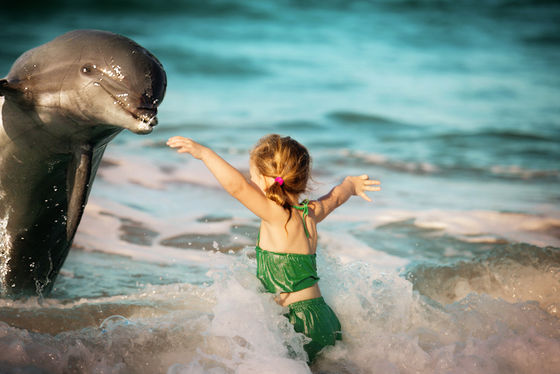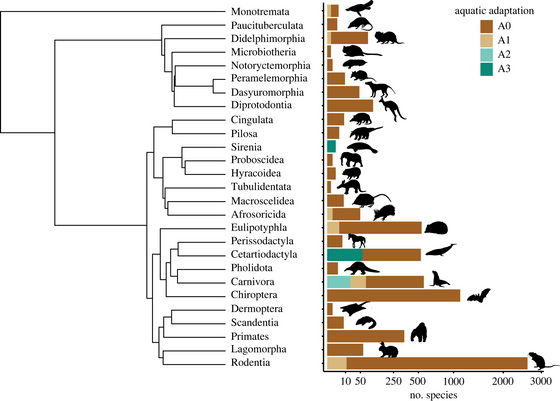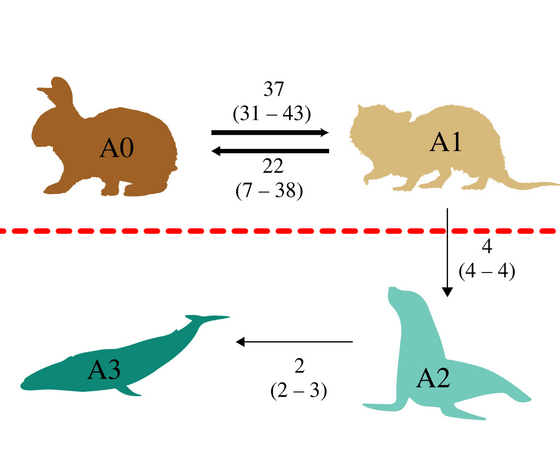Is there a possibility that evolved dolphins and killer whales will move onto land in the future?

Dolphins are known to be very intelligent, so some people may have
Dollo meets Bergmann: morphological evolution in secondary aquatic mammals | Proceedings of the Royal Society B: Biological Sciences
https://royalsocietypublishing.org/doi/10.1098/rspb.2023.1099
Dolphins and orcas have passed the evolutionary point of no return to live on land again | Live Science
https://www.livescience.com/animals/marine-mammals/dolphins-and-orcas-have-passed-the-evolutionary-point-of-no-return-to-live-on-land-again
It is believed that the ancestors of terrestrial vertebrates such as humans are fish that crawled onto land from water between 350 and 400 million years ago. Fish that moved onto land later developed limbs and branched out into amphibians, reptiles, and mammals. All vertebrates other than fish with these four legs, including snakes and whales, are called `` tetrapods .''
Most mammals that left the sea chose to live on land, but some, such as dolphins, returned to the sea and adapted to life in the water. Considering these circumstances, it seems that it would not be so difficult for dolphins that have once lived on land to return to land.

In a study published in July 2023 in the Proceedings of the Royal Society B, Bruna Farina of the Department of Biology at the University of Friborg, Switzerland, and colleagues investigated whether aquatic animals can revert to terrestrial animals. , we modeled and analyzed the future evolutionary potential of 5,635 extant and relatively recently extinct mammal species based on their evolutionary trajectories.
Mammal habitats and classifications were collected from
They then classified these animals into four categories depending on their degree of adaptation to the water. The first is ``A0'', which is like giraffes and gorillas that live almost completely on land, the second is ``A1'', which is aquatic like the platypus but has no trouble moving on land, and the third is like sea otters. The fourth type is ``A2'', which has limited movement on land, and the fourth type is ``A3'', which is almost unable to live on land like a whale.
Of the 5,635 species, the fully terrestrial 'A0' species account for 5,449 species, accounting for 96.7% of the total, and the semi-aquatic 'A1' and the fully aquatic 'A2' and 'A3' species total 186 species. It is said that there are only 3.3%.

The research team then looked at the evolutionary relationships between species with common ancestors, compared the traits of each species, and created a model to estimate the probability that a particular trait would evolve, so that animals in each category would We analyzed the probability of moving to another category.
The results confirmed that there is a boundary between the semi-aquatic (A1) and fully aquatic (A2) categories, and that once an animal crosses this boundary and adapts to the water, there is no going back. The only reversible movement is between fully terrestrial (A0) and semi-aquatic (A1), and the estimated number of species that have moved between these categories is 37 times from A0 to A1 and 37 from A1 to A0. ' was 22 times, while the transition rate from A3 to A2 and from A2 to A1 was almost zero.

The idea that evolution is thus irreversible was proposed by Louis Dorot, a Belgian paleontologist in the 19th century. This principle, known as Dollo's Law , states that once a complex trait is lost in a lineage, it is unlikely to reappear in subsequent generations.
The transition to an aquatic life was associated with multiple changes, including increased body weight to help keep warm in cold environments and a carnivorous diet to support metabolism. Researchers believe that such changes may make the struggle for survival tougher for aquatic animals returning to land.
Dr. Farina, lead author of the paper, said of the study, ``While it is possible to gradually transition from fully terrestrial to semi-aquatic, some aquatic adaptations have irreversible boundaries. 'For this reason, there is virtually no chance that completely aquatic animals such as dolphins and whales will ever return to land.'
In addition, Virag Sharma, a comparative genomicist at the University of Limerick in Ireland who was not directly involved in the research, told the science news site Live Science, ``Dollo's law is regularly used in this type of macroevolutionary research. Some people contradict this law and argue that ``transition from sea to land is not impossible at all,'' but Farina et al.'s paper debunks this common belief. It was rated as ``.
Related Posts:







